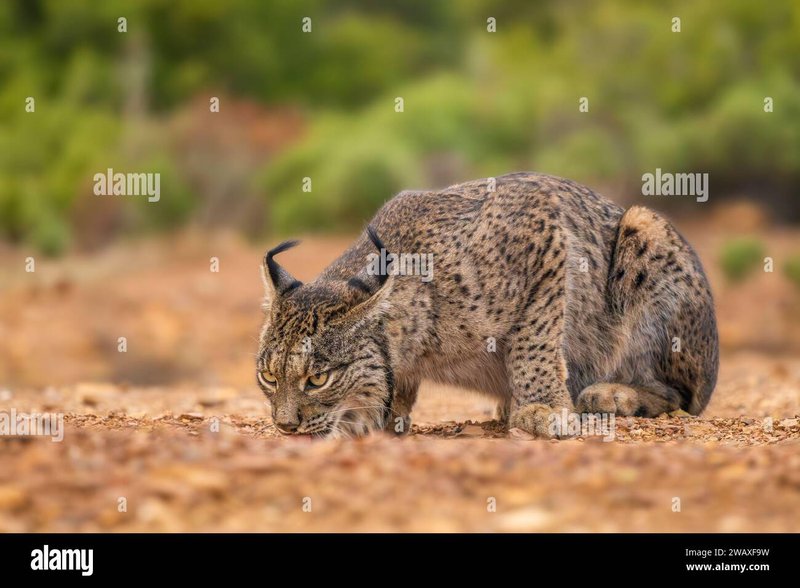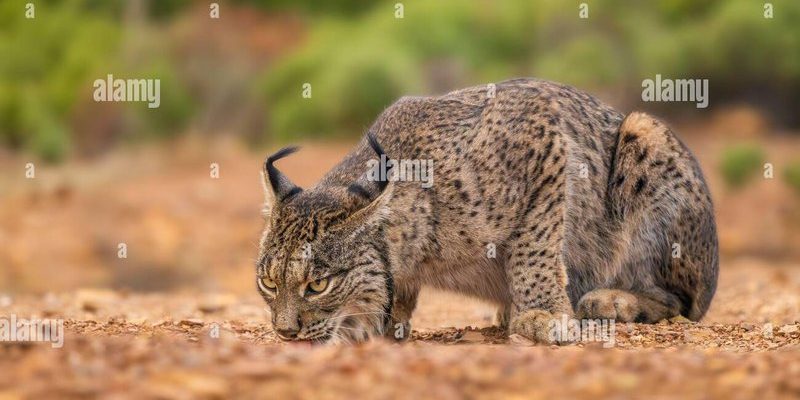
Surviving in harsh environments isn’t easy for anyone, let alone a lynx. Think of it like navigating through a tough obstacle course where every twist and turn presents a new challenge. The Iberian lynx faces threats from habitat loss, changing climates, and food scarcity. Yet, despite all that, they have developed remarkable traits and behaviors that enable them to thrive. So, how exactly do these lynxes manage to survive in such tough conditions? Let’s dive into their world and uncover the secrets of their survival.
Adapting to Habitat Loss
Iberian lynxes primarily inhabit scrubland and Mediterranean forest areas, which provide plenty of cover and hunting opportunities. Unfortunately, urban expansion and agriculture have led to significant habitat loss. But here’s the thing: these lynxes are resourceful. They can adapt to fragmented habitats by using the available cover to hunt and hide.
Imagine being forced out of your home but learning how to make the best of it. Iberian lynxes have shown they can adjust their territories based on what’s available. By seeking areas with dense vegetation, they can remain hidden from both predators and humans. This adaptability is crucial for their survival.
Moreover, conservation efforts have been ramping up in recent years. Organizations are working to restore areas and create wildlife corridors that allow these lynxes to roam safely between habitats. It’s like building a bridge over that obstacle course—making it easier for the lynxes to navigate their world.
The Role of Genetic Diversity
Genetic diversity plays a vital role in the survival of the Iberian lynx. A healthy population can adapt more easily to changing environments. When a species has a variety of genetic traits, it’s more resilient to diseases and environmental changes. Unfortunately, the Iberian lynx population has faced severe bottlenecks. Conservationists have been focusing on breeding programs to increase genetic variation.
The introduction of lynxes from different regions and careful monitoring of offspring have helped boost the population. It’s like mixing different colors of paint to create new and vibrant shades. This genetic blending is a hopeful sign for the future of the Iberian lynx.
Hunting Skills and Diet
The Iberian lynx is a master hunter, with an impressive diet primarily consisting of European rabbits. Unlike many other predators, these lynxes rely heavily on a single prey species—something that can be risky. If rabbit populations decline, so do the lynxes. But they have an arsenal of skills that help them succeed in finding food.
These cats are stealthy, using their remarkable eyesight and acute hearing to locate their prey from quite a distance. When they spot a rabbit, they employ a combination of patience and speed. Imagine a cat playing with a laser pointer—focused, alert, and suddenly in action. That’s how an Iberian lynx reacts when hunting.
Additionally, their spotted fur provides excellent camouflage in the dappled light of their natural habitat. This ability to blend in means they can ambush unsuspecting rabbits more effectively. It’s nature’s way of giving them an edge, and it’s a huge part of how they survive.
Water Sources and Climate Adaptation
Adapting to a changing climate is essential for survival. Iberian lynxes are primarily found in areas with a Mediterranean climate, which means they have to cope with both hot summers and wet winters. They rely on natural water sources like rivers and lakes, but during dry spells, finding water can be a challenge.
To combat this, these lynxes have developed behaviors to minimize water loss. They tend to be nocturnal, hunting at night when temperatures are cooler. This not only helps them avoid the heat but also makes their hunting efforts more successful. Think of it as doing your outdoor activities in the early morning or late evening to stay comfortable.
Moreover, conservation teams are working on preserving and restoring habitats that ensure these water sources remain available. It’s crucial for the lynxes’ survival, especially as climate patterns continue to shift.
Social Behavior and Territory
Iberian lynxes are generally solitary animals, but they do exhibit interesting social behaviors, especially during mating season. Males will establish territories, and these areas can overlap with females. The balance they maintain is fascinating. They mark their territory, ensuring that other lynxes are aware of their presence.
Territory size can vary based on prey density. In areas with plentiful food, a lynx might have a smaller territory. This is a tactical move, kind of like a chess player deciding how much space to control based on the pieces on the board. During tougher times, they may expand their territory to find food, showcasing their ability to adapt to circumstances.
Mating usually occurs between January and March, and females will raise the kittens alone. The young lynxes rely heavily on their mothers for survival in the early months. This delicate period is critical for shaping the future generation of Iberian lynxes, ensuring they learn essential survival skills.
The Importance of Conservation Efforts
Conservation organizations have made remarkable strides in boosting the Iberian lynx population. By raising awareness and funding, they are working to protect the remaining habitats and restore areas where the lynxes once thrived. It’s heartening to see communities rally around these beautiful creatures, realizing that preserving biodiversity benefits everyone.
Efforts include habitat restoration, breeding programs, and education. Engaging local communities is vital; after all, they are the stewards of the land. Teaching people about the importance of the Iberian lynx can help foster a sense of responsibility and care for their environment.
Protecting the Iberian lynx doesn’t just benefit the species itself. Healthy ecosystems support a variety of wildlife, and by safeguarding these lynxes, we’re also protecting numerous other species that share their habitat. It’s a win-win situation, showcasing how interconnected life truly is.
Future Challenges and Hope
While there’s hope for the Iberian lynx, challenges remain. As habitats continue to face threats from development and climate change, these lynxes must keep adapting. But with ongoing conservation efforts, there’s optimism for the future.
Strengthening legal protections for their habitats and continuing education campaigns are vital to ensuring the Iberian lynx can thrive in the wild. It’s like building a safety net—making sure that if they fall, there’s something to catch them.
The resilience of the Iberian lynx is a testament to nature’s adaptability, and it reminds us of our role in protecting these majestic creatures. By working together, we can ensure that future generations will have the opportunity to marvel at the beauty of the Iberian lynx.
In a world filled with challenges, the story of the Iberian lynx is one of hope and perseverance. Through their survival strategies, they teach us valuable lessons about adaptability and the importance of standing together to protect our planet’s incredible biodiversity. Every step toward conservation is a step toward a brighter future for both the lynxes and the ecosystems they inhabit.

